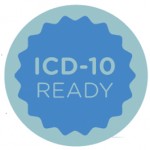According to CMS, the transition to ICD-10 is occurring because ICD-9 produces limited data about patients’ medical conditions and hospital inpatient procedures; the data set is 30 years old, has outdated terms and is inconsistent with current medical practice; and the structure of ICD-9 limits the number of new codes that can be created. In being more specific, ICD-10 contains significantly more codes than the previous iteration of the data set, and the codes are longer.
In ICD-9, there are about 14,000 diagnosis codes and 3,800 procedure codes, totaling about 17,800. By comparison, ICD-10 has nearly 70,000 diagnosis codes and nearly 72,000 procedure codes, for a total of almost 142,000 codes.
In addition to the increased quantity of codes, the new code structure poses challenges. Although there are some similarities (e.g., the hierarchal structure, the meanings of the symbols and the criteria for code assignment of the principal diagnosis code), some differences will take getting used to. The most significant difference is the code structure: where ICD-9 codes contain three to five characters, ICD-10 codes contain up to seven alphanumeric characters. Further, the “V” and “E” codes from ICD-9 are being discontinued, and the sixth digit in ICD-10 will mainly be numeric, and identify laterality and drug poisoning.
“[The ICD-10] codes have a different structure, so there are different letters and numbers involved,” says Will Harvey, MD, MSc, Tufts Medical Center, Boston, chair of the ACR Government Affairs Committee. “It’s not inherently intuitive to anyone who just looks at the list, and there’s a great deal more specificity.”
The most significant difference [between ICD-9 & ICD-10] is the code structure: Whereas ICD-9 codes contain three to five characters, ICD-10 codes contain up to seven alphanumeric characters. Further, the ‘V’ and ‘E’ codes from ICD-9 are being discontinued, & the sixth digit in ICD-10 will mainly be numeric, & identify laterality & drug poisoning
Take a fracture for example, Dr. Harvey explains. Although ICD-9 has a single code for a fracture, ICD-10 has much more specificity, and the code integrates numerous details, such as right or left arm, compound fracture or not, healed or not healing, as well as other complications. “Another example specific to rheumatology is that [the] number of codes for rheumatoid arthritis goes from 10 to 246,” he adds. “It will take time for people to get a grasp [on] how to use the specific nature of these new codes.”

